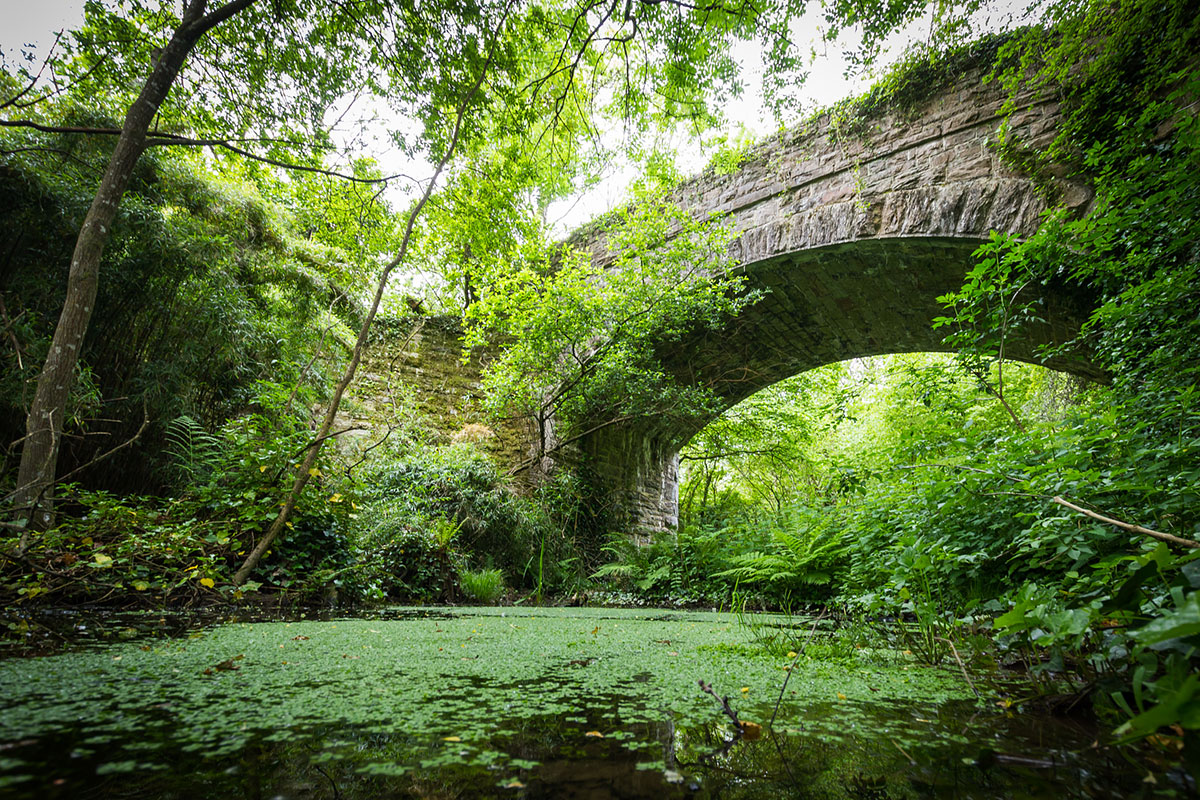
PHOTO: THE HRE GROUP
The bridges and tunnels earmarked for infilling or demolition by Highways England stand as monuments to the courage, ambition and determination of the great Victorian engineers who constructed them. But many have more than just heritage value.
Around one-third of the 134 threatened structures are already proposed for reuse as part of active travel routes, reopened railways or heritage line extensions, or they have identified potential to play such roles in the medium term. So, through its destructive policy, Highways England is compromising our ability to build a better future.
Access beneath four bridges is needed for the proposed Hereford-Hay Greenway; three concrete structures span the route of the Neilston-Uplawmoor Community Link in East Renfrewshire which is at the detailed design stage; two masonry bridges lie on the route of the Alnwick Greenway, passing through the fabulous landscape of Northumberland. All are on the at-risk list.
Two metal spans - now partially infilled - cross the former Penrith-Keswick branch in the Lake District which has long been the focus of a reopening campaign. If the scheme gets the go-ahead through the Government’s Restoring Your Railway fund, these bridges will have to be demolished and rebuilt.
Under-threat structures in Scotland and Wales will be needed if the devolved administrations press ahead with reinstating the Dumfries-Stranraer line - currently under consideration as part of the South West Scotland Transport Study - or the socially-important Carmarthen-Aberystwyth route, a missing link through west Wales.
Demolition of a bridge in Dorset would prejudice development of the ambitious Bridport Renewal Corridor involving a cycle route and light railway, whilst the proposal to establish a Norfolk Orbital Railway would suffer a considerable set back if Highways England went ahead with an infilling scheme near Fakenham.
The business case for an extension of Brechin’s Caledonian Railway towards Montrose would be weakened if an unusual Grade B-listed structure on its route was put beyond use. And the prospects for a planned reconnection of the Eden Valley and Stainmore railways in Cumbria have been damaged by Highways England’s unjustified infilling of a masonry bridge at Great Musgrave.
The state-owned roads company has also set its destructive sights on a bridge built by engineer Isambard Kingdom Brunel near Saltash, Cornwall, and a structure in Northumberland which forms part of the delightfully restored former railway station at Staward.
These are the losses Highways England intends to inflict on good people trying to do positive things for their communities. Not only are its actions damaging, there are no engineering, public safety or financial grounds for progressing them. Most of the bridges are in fair condition and infilling costs an average of £145K per structure, whilst routine inspection and maintenance typically involves £25K of expenditure every ten years.
This programme of infillings and demolitions is driven only by policy and a desire to reduce the level of liability to which Highways England and the Department for Transport is exposed. They refuse to view the Estate as an asset, despite the demonstrable value of many structures for future sustainable transport use.
About Us
The HRE Group is an alliance of walking, cycling and heritage campaigners, engineers and greenway developers who regard the Historical Railways Estate’s structures to be strategically valuable in the context of building a better future.
Last updated 24 July 2024
© 2024 The HRE Group


